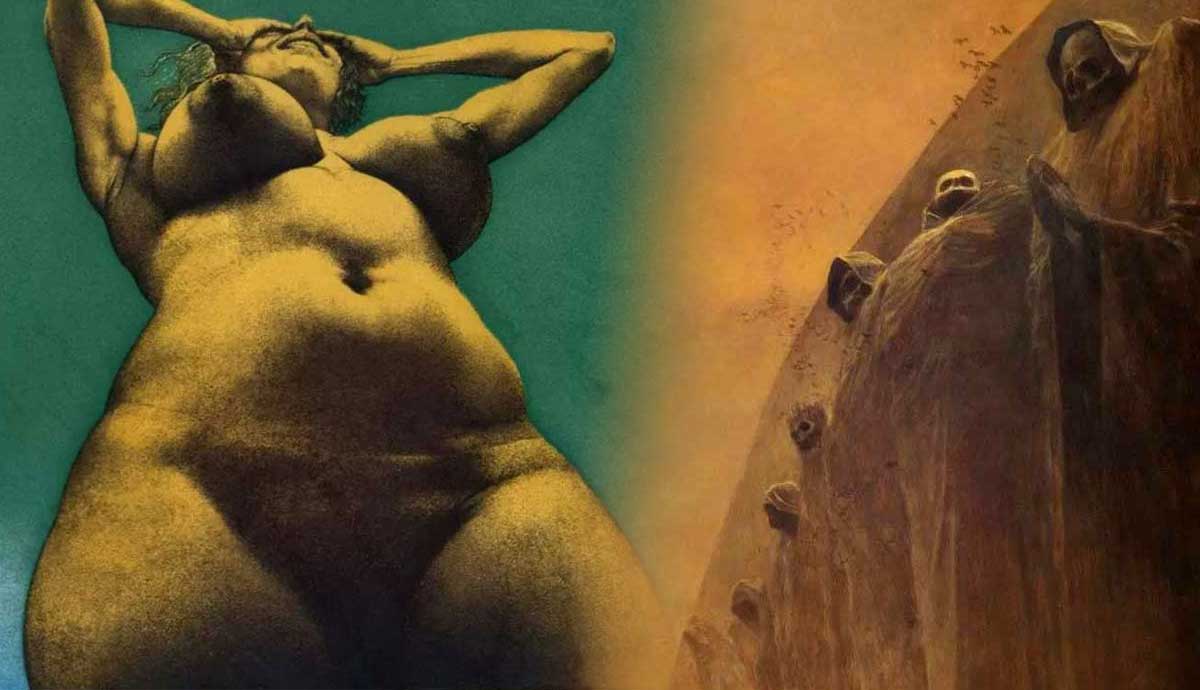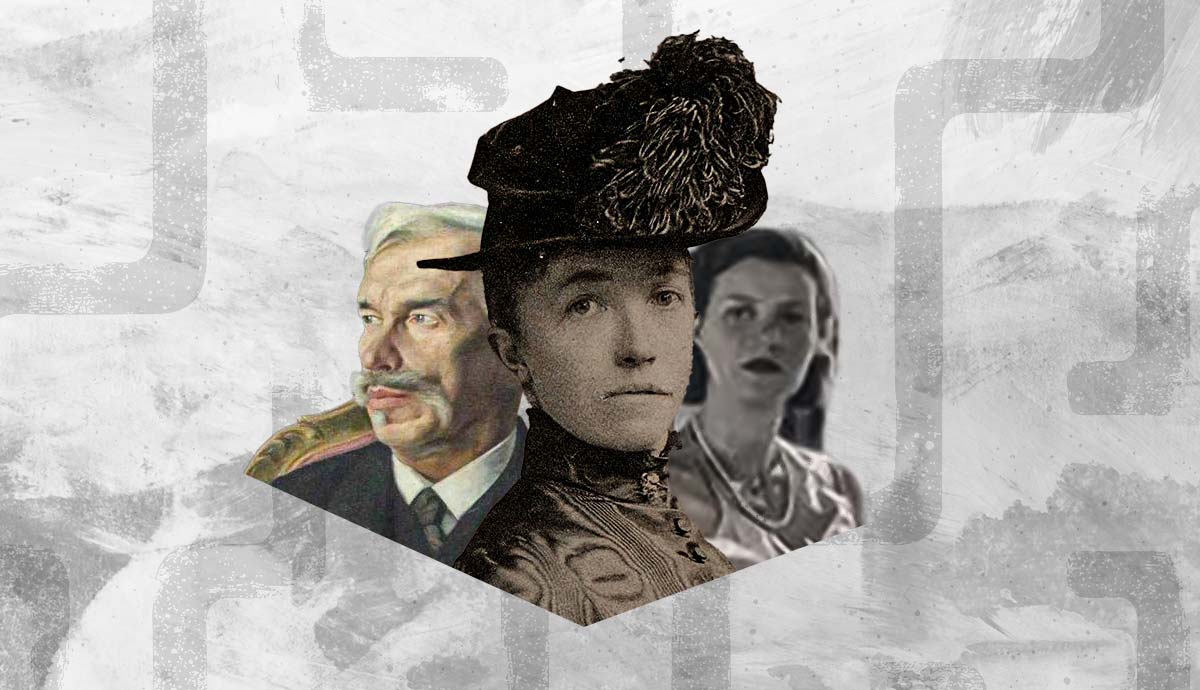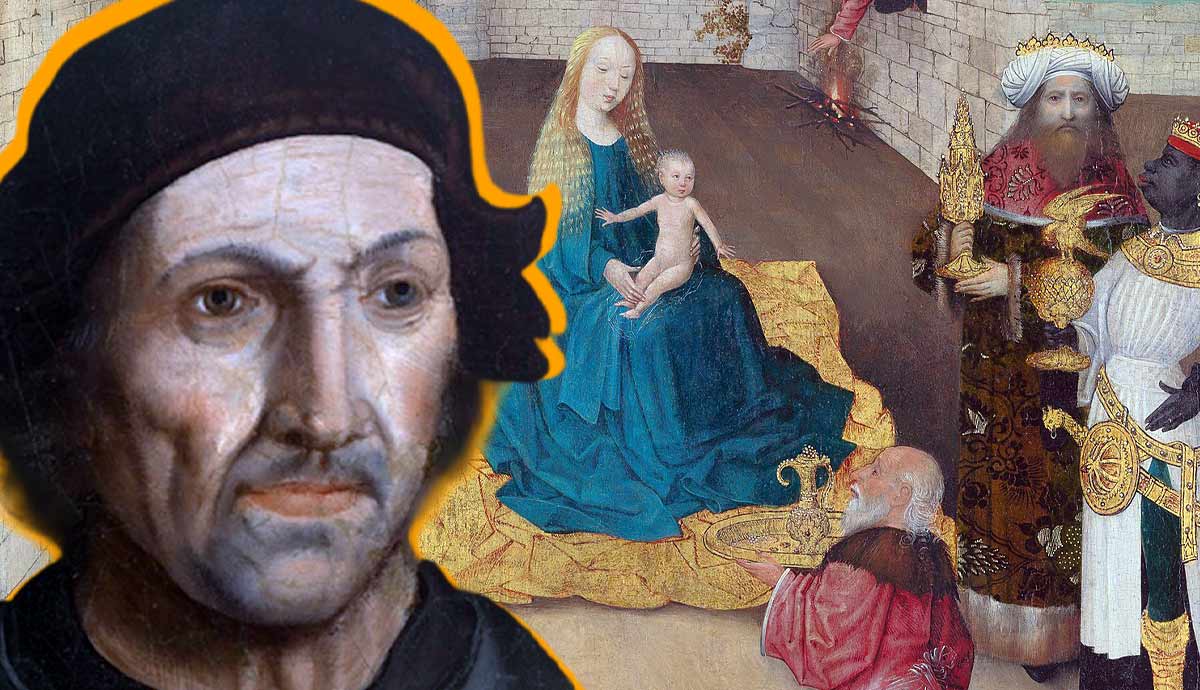
“Fantasy” and “fantastic” are terms that have been used to describe a wide variety of subjects in art. The two terms are easily and often confused as the content of the two genres overlap. Even Wikipedia redirects “fantasy art” to “fantastic art,” which indicates that separating the two is an extremely difficult issue likely to garner much debate. Artists, too, are not confined to a single genre, and their works exist on a spectrum blending one form into another and crossing the boundaries of artistic expression.
As such, it is difficult to define where fantastic art ends and fantasy art begins. Nevertheless, upon closer inspection, there are trends within the two themes of artistic expression which may offer clues in defining them as separate entities. There are varying subjects, styles, and time periods that affect the classification of the artworks in question.
Here is what makes them different and what makes them the same.
Fantastic Art from the Very Beginning

Although fantastic art cannot be defined as being subject to any distinct period in history, there are certain themes prevalent throughout different time periods that have defined the genre. In the same vein, fantastic art is not defined by a dedicated school of artists. Rather, there are artists who have been part of schools of art such as Surrealism, Romanticism, and Mannerism who have lent their imaginations to the canvas to produce works that can be defined as fantastic art.
At its core, fantastic art, which has themes found also in depictions of contemporary fantasy art, began within the context of imaginative realism. It portrayed, in a realistic manner, things that are not real. With its roots in mythical, folkloric, and mystical art, there are a host of creatures that appear. One can argue that fantastic art has its roots as far back as prehistory, with cave art depicting esoteric ideas, but these depictions are too far removed chronologically from the fantasy genre to establish a very meaningful comparison. Fantastic art is a theme found throughout art history and is not necessarily bound by time periods nor characterized by any single style.
For the sake of categorization, an easy point at which to start classifying particularly noteworthy and famous art as fantastic art would be the significant corpus of Hieronymus Bosch as well as the art of Piero di Cosimo. However, biblical-themed art can be classified as being separate from fantastic art. There is no denying that Bosch’s works depict fantastical elements of landscapes strewn with all manner of imaginative creatures and objects.

In roughly the same time period, Piero di Cosimo painted fantastic art, often in the form of displaying Greek myths. It is interesting to note that these early forms of fantastic art have much in common with contemporary fantasy art, especially that which deals with images filled with action, displaying parties of adventurers dealing with encounters presented to them in Dungeons & Dragons settings (heroic fantasy). This poses a problem in determining where fantastic art ends and fantasy art begins. The two have been intertwined and have overlapped for over half a millennium!

If one were to compare the two paintings, at first glance, they would seem dissimilar. However, upon closer study, similarities begin to appear. Both images contain wide open spaces filled with action. Both have fantasy creatures, and both are dynamic depictions of combat. The primary thing that really separates them is approximately 500 years.

It can be argued that contemporary fantasy art is often a current take on older fantastic art. While one is considered “fine art,” the other is considered “low brow” by many fine art enthusiasts. The reasons for this could be many, but it certainly isn’t for the lack of skill of the artist.
Nevertheless, fantastic art evolved in theme and style. In the 18th century, the romanticist Francisco Goya represented the fantastical in his “black paintings.” Witches Sabbath (1798) and Saturn Devouring His Son (1819 – 1823) stand out as prime examples of fantastic art.
One version of Contemporary Fantastic Art…

Where what is considered to be fantastic art really departs from traditional styles was in the 19th century with artists such as the Belgian James Ensor (1860 – 1949), who, through symbolism, advanced fantastic art themes into the realms of European Expressionism and Surrealism. His brightly colored grotesque style often deals with death and introduces a unique form of surreal absurdity into the genre.

By the 21st century, fantastic art evolved at a rapid pace incorporating new artistic styles, including Dadaism, Surrealism, modernism, abstraction, and Cubism. Given the huge footprint and loose definition of what is considered “fantastic,” the list of 20th-century and 21st-century artists that can be categorized as fantastic artists is, indeed, very long. It includes artists such as Picasso, Magritte, Max Ernst, Giorgio di Chirico, Jean Arp, Louise Bourgeois, and many others.
Today, much fantastic art is barely recognizable as the evolutionary product of the traditional fantastic art themes produced in the 15th, 16th, 17th, and 18th centuries.
The Other Version of Contemporary Fantastic Art…

One can separate contemporary fantastic art into subsets such as fantastic abstraction, fantastic dadaism, etc.. and critically, in this case, fantastic realism and magical realism, which expand on fantastic art by including Surrealism and Symbolism in a style that is not integral and uncommon to the first idea of contemporary fantastic art noted above. In addition, science fiction becomes a consideration. It is in these realms that the distinctive line between fantasy and the fantastic becomes blurred. While the first version of contemporary fantastic art is a far cry from fantasy art in terms of style (because of the exploration of “fantastic” in the aforementioned art movements), the latter becomes a close relative of fantasy art, and the themes in both begin to merge at the center of a spectrum.
Notable fantastic realism artists here would include Rudolf Hausner, Ernst Fuchs, Arik Brauer, Wolfgang Hutter, and other members of the Vienna School of Fantastic Realism, founded in 1946.

In addition to the founders of fantastic realism, it would also include other renowned artists, notably Zdzisław Beksiński, H.R. Giger, Michael Whelan, and Rodney Matthews, to name a few. Included would also be artists whose work is considered fantasy art and not fantastic art. And thus the confusion continues…
One major point that links both perceptions of contemporary fantastic art is that they tend to focus on the absurd and impossible. This is in contrast to fantasy art which generally depicts the subjects in believable if unreal, situations.
So Where Does Fantasy Art Fit in?

Fantasy art has its roots in the same place as fantastic art. Until about the 1960s, fantastic art and fantasy art occupied the same space, and it’s debatable whether the two actually existed as separate subjects. What is apparent is that there was a departure in themes, subjects, and styles between one and the other when Frank Frazetta was painting the covers for books about Conan and inspiring other artists to do similar things. At this point, a new distinction was required to separate what was considered “fantastic” and what was considered “fantasy.”
While some fantastic art styles were departing radically from their roots and mingling with other art movements of the era, fantasy art retained the imaginative and magical realism of traditional fantastic art. To this, the argument arises whether fantasy art was a new addition to the art world or whether it exists as a reinvigorated form of traditional fantastic art. This is not to say fantasy art did not radically evolve through the decades. It just did so within the confines of what was originally considered fantastic art.

A major point of contemporary fantasy art is that it was guided by commercial enterprise. It was not originally intended as art in its own space but rather as an adornment for products being sold. Contemporary fantasy art graced the covers of books, then games, then gaming cards, to computer games. Eventually, the genre broke free of these enterprises, and the artists achieved enough prestige and recognition to create art intended to exist on its own terms. As such, the art is now found in galleries. There is pushback from the conservative elements of the art world that reject fantasy art as a relevant form or style of art that deserves the same consideration as the contemporary fantastic art that is loved and publicly displayed without a second thought.

Fantasy art has also broken free of its confines of “heroic fantasy” and progressively explores artistic styles and subjects found in contemporary fantastic art. As heroic fantasy, it is firmly in the realm of fantasy art, but as the art incorporates other themes and styles, it begins to blend with and shift into fantastic art. But since the artists are considered fantasy artists, their fantastic artwork gets defined and accepted as fantasy art.

A bone of contention here is that fantasy art often incorporates the feminine form in ways that many people in modern society find problematic. It is difficult, however, to see this as a situation unique to the modern world. Erotic art has existed for time immemorial and was certainly an element of fantastic art and other forms of fine art throughout the ages. A new argument arises out of this in which depictions of women in contemporary fantasy art are considered a product of the male gaze or a symbol of feminine power.
Composition: An Example of Evolutionary Difference

Contemporary fantasy art can be separated from traditional fantastic art in a number of ways. One example of this is that while the subject matter may stay the same, the composition is wildly different. Fantasy art, for the most part, has been defined by the market for which it is intended. If we look at a battle scene, for example, the flowing lines of Renaissance mores give way to more realistic designs where the combatants are less intertwined physically. In other words, in contemporary fantasy art, there is less emphasis on depicting physicality through wrestling and more focus on the individual figures and the weapons they are using.

Even scenes of combat from later artistic periods involve an unrealistic amount of unnecessary touching; however, this could be largely due to the fact that the artists were trying to display as many characters as possible in a relatively small area.
The caveat, however, is that the theme is a general one, and there are many examples from fantastic art and fantasy art that act as exceptions to this observation.
A consideration of how contemporary fantasy art differs from traditional fantastic art, therefore, is the perception of what constitutes realism (or imaginative realism). In other words, the subjects, their stances, their movements, and their interactions with each other are subject to different interpretations of what looks realistic.

Both traditional fantastic art and fantasy art are wide-reaching genres that are very loosely defined. They overlap and intertwine and are then separated by the audience who wishes to view them in their own contexts. Much of what differentiates the two genres exists outside of the actual physical qualities of the art and into the realm of the intended purpose. Where one was intended to adorn a gallery’s walls or the ceiling of a church, the other is intended to advertise a product or decorate a gaming card. Our perception of the purpose defines how we relate to the art. And as such, what is considered to be fantastic art finds itself being considered for high praise by fine art enthusiasts, while what is considered to be fantasy art struggles to reach the same level of prestige, even when the two can be indistinguishable.

With this in mind, it is salient to point out that this opinion is problematic in that it relies on the generalizations of the fine art enthusiast community, and there are sure to be many people within this community who break with common perceptions of affected superiority who could supply a gamut of arguments and counter-arguments on the nature of fantastic and fantasy art. In short, the definitions are the assertions of individuals rather than an official consensus.

As for contemporary fantastic art, the more abstract form of it is wildly different from fantasy art as a whole, whether it’s contemporary fantasy art or whether it’s traditional fantasy/fantastic art. The magical and imaginary realism side of contemporary fantastic art, however, has many overlaps with contemporary fantasy art, and many works of art can be considered to be defined by both.










